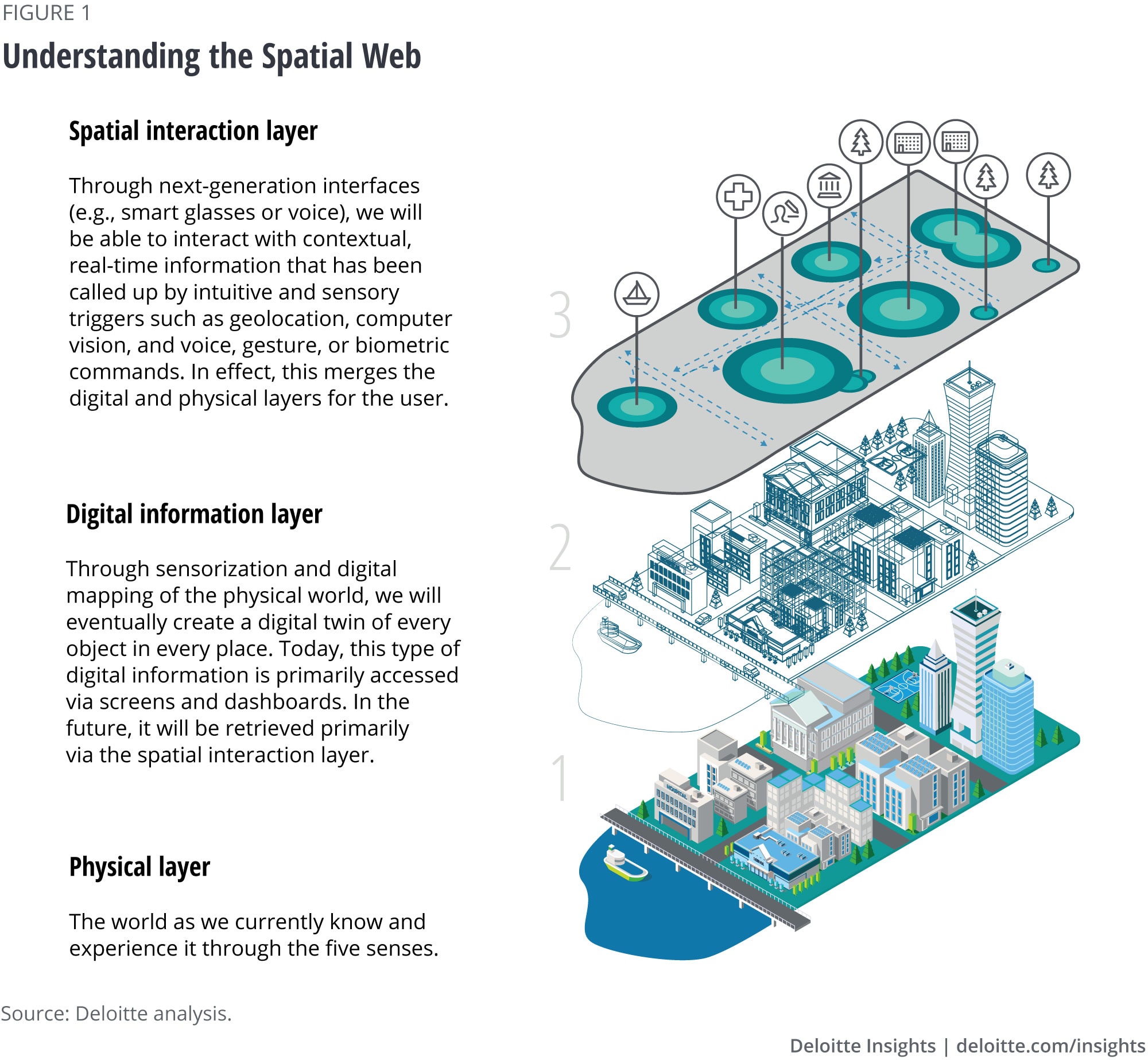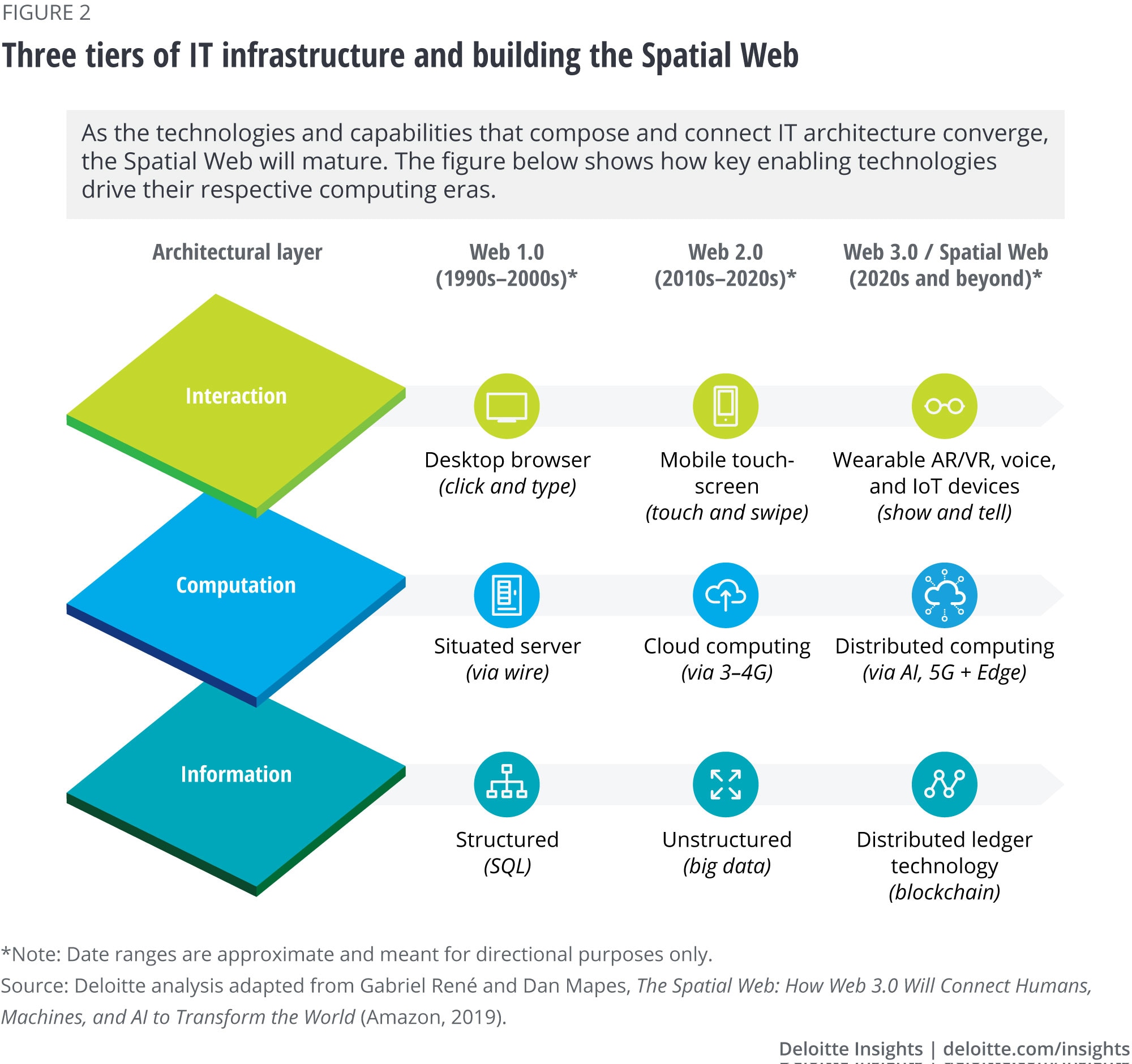Corrsy Closes $500,000 Pre-Seed Investment to Revolutionise Education in the SWANA Region
Get To Know Web 3.0 And What It Means For Iraq
The internet is expanding and evolving at a rapid rate. In less than three decades, the internet has become a crucial part of our everyday lives. Now, it has evolved further into what is being called ‘Web 3.0’, ‘3D Web, or ‘Spatial Web’.
All this talk about NFTs and the Metaverse, it all comes under Web 3.0 – the latest vision of internet technology promising new features for users and solutions to complex world problems.
Rapid innovation in technologies like augmented and virtual reality (AR/VR), advanced networking with 5G infrastructure, geolocation, IoT devices, sensors, distributed ledger technology, and artificial intelligence/machine learning (AI/ML) is merging our physical and digital lives. It is changing the way we work, communicate, and interact with objects.
But, what is Web 3.0 exactly? Like all new technological changes, it is difficult to provide an accurate definition of what Web 3.0 entails at such an early stage. However, we can extrapolate from what the current vision is for Web 3.0

What Does Web 3.0 Look Like? Zainab’s Story
Let us advance into a future where the envisioned Web 3.0 is fully implemented, and Iraq has completely integrated between the digital and physical spheres. Let us see life from the eyes of someone from that future. We’ll call her Zainab, a 25-year-old Architect working in a design firm in Baghdad.
Her morning starts by drinking tea and watching her favourite show on her Augmented Reality (AR) glasses. Once breakfast is finished she leaves the house, which is managed by Artificial Intelligence (AI). All the doors are automatically locked and unnecessary lights and electrical devices are switched off.

Baghdad has become a smart city, so when she goes to the nearest bus station, she is given instructions on which bus will be the quickest option to her workplace. Upon boarding the self-driving bus, sensors pick up on the number of people waiting and notify management to avoid overcrowding at the station and provide additional resources.
The bus ride gives Zainab a chance to catch up on messages and emails. Once she reaches her workplace. payment is automatically deducted from her account thanks to facial scanning and geolocation technologies.
She enters her office and her notification settings are automatically changed to focus mode so that she doesn’t get distracted during work hours.
Zainab is designing a villa for a client using AR projection with AI software to test the design for earthquake resistance and structural integrity. The AI also predicts the amount of light entering the structure and the cost of each modification with data coming from recent market prices.
She sends the 3D model to the client for final approval via Secure Ledger technology that only the client can access. Once the client approves the design, the design is sent to their partner construction company. The construction company’s system scans the design and automatically orders the components and equipment needed for the building, along with an initial construction plan and an approximate project end date.
Zainab has finished a long day of work and gets back to her AI House. The House has already adjusted the house temperature, prepared the shower, and ordered her favourite food which will arrive as soon as she finishes her shower.
This may sound like a science fiction story, but we are already seeing a glimpse of this envisioned future. Some of Zainab’s routine are already available to use. Artificial Intelligence and Machine Learning technologies are advancing and sensor technologies are becoming more accurate and affordable. It may seem like we are decades away from Zainab’s world, but let’s not forget that nearly 30 years ago, we didn’t even have the internet.
History of the Web
Like any good movie trilogy, you can’t watch the third movie without understanding what happens in the first two. Web 1.0 and Web 2.0 can guide us to understanding Web 3.0. Let’s start by addressing the oldest iteration of the web as created by Tim Berners-Lee.

Web 1.0
Web 1.0 was the first stage of the internet. This is the most basic form of the internet consisting mostly of static HTML pages, and content from a file system rather than a database.
Websites had limited functionality and the role of the user was restricted to that of a consumer. For example, e-commerce websites during this period only displayed content and payment information. Minimal input was required from users.
The lack of interactivity of Web 1.0 combined with the increasing popularity of the internet gave rise to a new iteration of the web.
Web 2.0
This version of the Web is what we are currently familiar with. The core of Web 2.0 relies on the interactivity of the user with information being exchanged between the users and websites. This resulted in the rise of social media platforms and user-generated content, with websites optimising their content and services to individual users.
This demand for data created a lucrative business model giving birth to tech giants like Amazon, Google, and Facebook.
Web 2.0 relies on what is called the client-server model where any request by the user is directed to a centralised server for response.
Abuse and mismanagement of user data by “Big tech” (refers to the major technology companies such as Apple, Google, Amazon, Facebook and Microsoft) created a backlash from the tech community regarding privacy.
The fear that the free web is becoming more centralised and can be abused by governments and other agencies, combined with the rise of blockchain and decentralised technologies, has paved the way for a restructuring of the Web. The new web gives back power to the individual to not be treated as a product but as a user.
Web 3.0
Before talking about Web 3.0 we need to talk about the concept of ‘Semantic Web’, a term coined by Tim Berners-Lee. Lee envisioned it as a smarter internet that was more autonomous, a web in which AI-supported machines would process content in a human-like way – a “Global Brain” where all data would be connected and understood both contextually and conceptually.
“I have a dream for the Web [in which computers] become capable of analysing all the data on the Web – the content, links, and transactions between people and computers. A “Semantic Web”, which makes this possible, has yet to emerge, but when it does, the day-to-day mechanisms of trade, bureaucracy and our daily lives will be handled by machines talking to machines. The “intelligent agents” people have touted for ages will finally materialise”
Tim Berners-Lee, Inventor of the World Wide Web
Although not the Semantic Web we hoped for, Web 3.0 brings us back to the original vision Lee had for the internet as permission-less with free access and no central authority or single point of failure, i.e. a “kill switch”.
The Benefits of Web 3.0

Global Financial Integration
Lack of financial access is one of the biggest obstacles facing developing countries. 1.7 billion adults worldwide do not have access to a bank account. Iraq is one of the countries heavily affected where only 23% of Iraqis have a bank account.
This lack of financial access restricts populations to their locality and prevents them from taking advantage of global markets.
Web 3.0 promises a robust blockchain-based financial solution where anyone with internet access and a crypto wallet can participate in the global financial scene. These users can also benefit from the security and anonymity such technology provides. Those who do not trust financial institutions will have no reason not to participate.

Decentralisation
The main theme of Web 3.0 is decentralisation. The previous versions of the internet were run by centralised authorities and big tech companies, resulting in single points of failure and control. Vulnerabilities of such architecture is apparent with thousands of cyber attacks and information leaks happening every year.
Web 3.0 removes the centralisation of the internet and enables users and machines to interact with data through a substrate of peer-to-peer networks, without the need for third parties.
The backend infrastructure of this version of the internet is inherently decentralised across a distributed network of nodes. The nodes are put in place to maintain the network, with no threat of a single point of failure and to prevent the control of the network by any government or organisation.

Democratisation of the Web
Like many countries, access to certain websites or the internet as a whole can be blocked due to political, societal and technical reasons. As many small Iraqi businesses heavily rely on social media to generate revenue, businesses can be negatively impacted if the internet is shutdown due to exams. With the current infrastructure of Web 2.0, your access to content and digital freedom is one decision away from being restricted. However, with Web 3.0’s distributed global network infrastructure, it guarantees free and unrestricted access to information for its users. Yet another example of control being given back to the users themselves.
Barriers to Web 3.0 in Iraq
Lack of Infrastructure
A key component to reaching the level of integration of digital and physical integration required for Web 3.0 is faster communication technologies, namely 5G network technology.
Despite Iraq having relatively good internet coverage in major areas, it lacks the higher speeds required for Web 3.0. Currently, little to no work is being done to address this issue, especially since the existing infrastructure is 13 years behind the rest of the world.

High Barrier to Entry
According to research, 96% of Iraqi women interviewed were digitally illiterate, and the number of digitally illiterate men is also high. Basic digital skills such as using a browser, buying online, researching, etc, are not common among the Iraqi population.
As Web 3.0 will use more advanced technologies like Distributed Ledgers, AR/VR, Machine learning and Artificial intelligence, it is difficult to imagine its widespread adoption in Iraq given the current tech knowledge and awareness of the population.
High Costs
The integration between the digital and physical worlds to achieve Web 3.0 requires the utilisation of AR/VR, IoT, AI/ML, and geolocation. Currently, these technologies are not cheap to use.
Like many technologies before, the costs are expected to reduce with time and increased adoption. Until then, these infrastructure technologies for Web 3.0 is out of reach for many Iraqis.
Conclusion
Web 3.0 is a game-changing technology that promises to revolutionise the way we interact with the digital world. It will surely open new markets and avenues for innovation.
Iraqi businesses and internet users, despite being far behind in accessing widespread technologies (as outlined above), should nonetheless look deeper into this subject and get a head start by adopting the existing technologies that Web 3.0 will be built upon. Iraqi individuals would also gain from increased digital awareness and education to utilise such technologies, so that they can all benefit from the security freedom and convenience that Web 3.0 promises to provide.
Resources
The Roadmap Towards 5G in Iraq: Challenges, Opportunities, and Required Procedures
